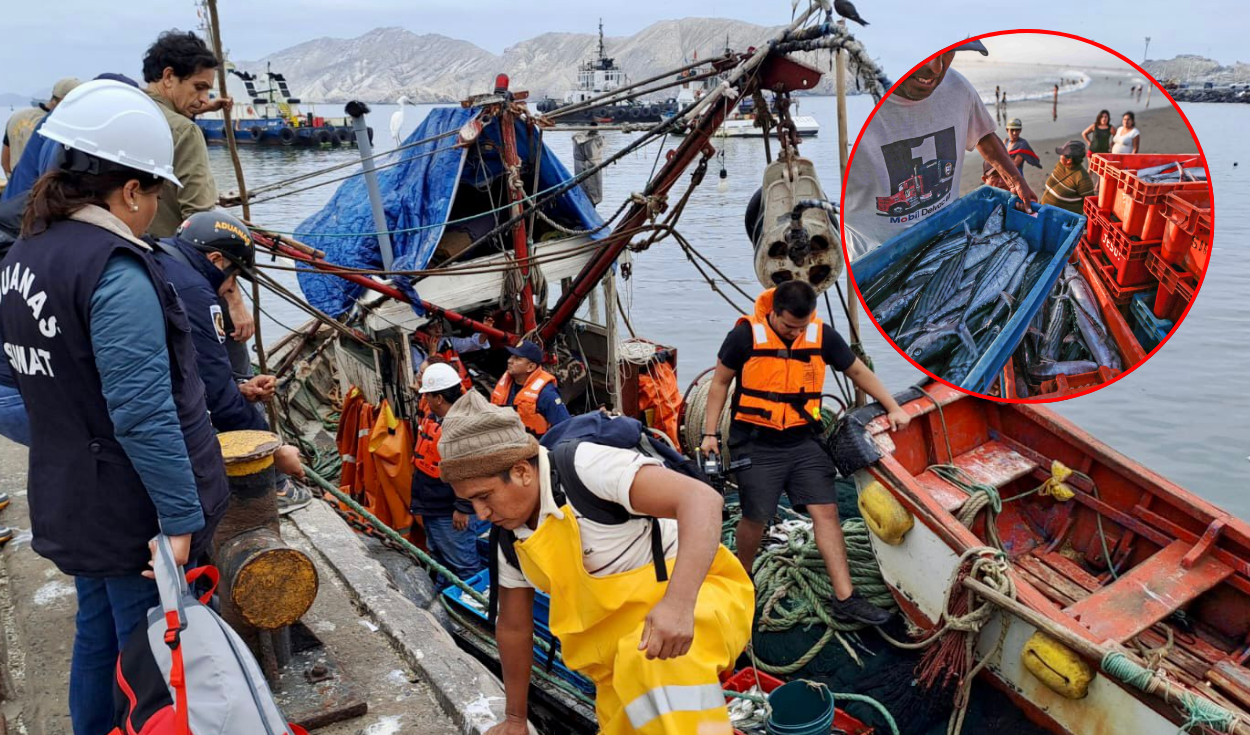
The crisis for the illegal fishing It has been paralyzing the Peruvian fishing sector for five months. Elsa Vega, president of the National Artisanal Fishing Society of Peru (Sonopescal), denounced to the Republic the flexibility that the government has with foreign vessels.
And they continue without respecting the Peruvian sisesat, a tool that adopts the international specifications of a ship monitoring system (VMS) and is used to trace fishing vessels.
“They have asked to send Peruvian vessels outside 200 miles to inspect them, verify irregularities and force them to install satellite devices. However, this procedure is complicated and costs more than S/20,000 per boat, ”said Vega.
He also pointed out that Chinese vessels prefer to avoid entering Peruvian ports, since they can border and use pretexts such as refueling or emergencies to enter and leave the territory without being duly supervised by the authorities.
They are not in Chile or Argentina
Recently, the Deputy Minister of Fishing and Aquaculture of the MINISTRY OF PRODUCTION (Produce), Jesús Barrientos, said that part of the boats in question have been entering Chile and Argentina more due to the “innovative” norm. The president of Sonopescal said she is totally false.
“How are they aware that they are already in Chile? That means that they are monitoring or telling them that they do not enter the Peruvian Sea because they are going to testify, we are not naive, ”José Luis Álvarez, general secretary of the Parachique Height Fishing Cooperative, told this newspaper Parachique, Sechura (Sechura (Copap).
With an discredited government, Álvarez continued, they must prove it. In that sense, he called for holders of the Executive and Legislative Power to accompany them to control at the points of 200 miles.
Missing employment and quotas
According to the Secretary General, the main concern of the fishing sector is the distribution of Fishing quotas. While the steel fleet, represented by the National Society of Industries (SNI), controls 84% of fishing, this sector is not the main employment generator in the country. On the contrary, it is wooden vessels under Law 26920, associated with artisanal fishing, which do create thousands of jobs.
However, the current distribution of fishing quotas, that is, the amount of fish that they can legally capture, favors large steel vessels, who also have ample economic capacities, leaving artisanal fishermen with minimal quotas.
“By 2025 industrial fleets will receive more than 80,000 tons, handmade fishermen can only access 30,000 tons, which endangers the stability of local markets and the sustainability of thousands of families,” said Álvarez.
That said, he asked that the fisherman joins the Supervisory and demanded the replacement of Ministry of Fisherysince it is essential to coordinate and manage the resources of the second most important sector in Peru properly.
Wink
Elsa Vega said that an update of the Fisheries Planning Regulations is needed, which implies:
- Selective fishing using traditional methods, such as the potter line instead of mechanized techniques.
- Stop the construction of new vessels due to overexploitation and lack of permits.
In addition, he said that the foreign fleet must fish outside 200 miles. The Peruvian industrial fleet does not have the right to fish pota because until now it has not made any fishing effort. The only fleet that is entitled is the artisanal fleet.
Source: Larepublica
Alia is a professional author and journalist, working at 247 news agency. She writes on various topics from economy news to general interest pieces, providing readers with relevant and informative content. With years of experience, she brings a unique perspective and in-depth analysis to her work.











